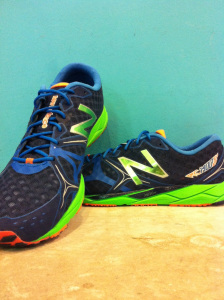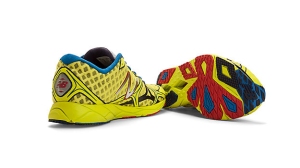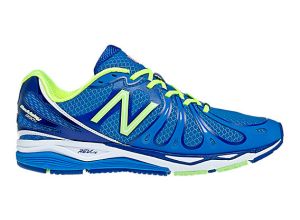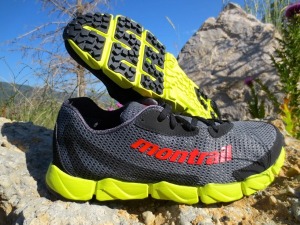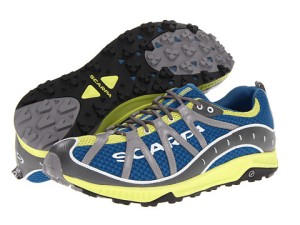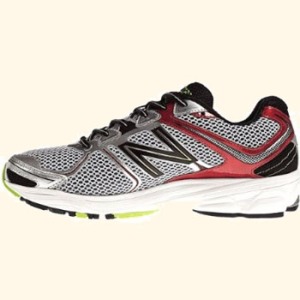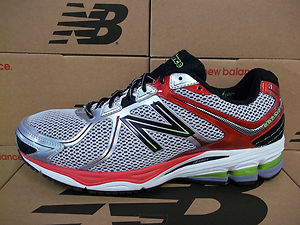Is the New Balance 1400v2 a fast and efficient training and racing flat?
The New Balance 1400v2 is a lightweight flat – only 6.3 ounces in the men’s edition, that looks fast and feels fast. I spent some time in this shoe provided by New Balance and found it to be intriguing. Is it a winner? Look for our verdict below.
They must be making the sidewalks softer; at least that’s what I thought while walking in this model. The 1400v2 offers the easy, comfortable feel of a bedroom slipper, something that’s typical of a racing flat. It’s remarkable that the shoe feels so well cushioned, coming in at under 6 and one-half ounces. But the REVlite midsole cushioning does its job and does it well.
The shoe is relatively narrow but offers multiple lacing options which can be used to either loosen or tighten the fit. There are two center eyelets which you can elect to use or not. I made use of the eyelet that keeps the tongue in place, but not the one further down.
The four bold colorways on the 1400v2 ensure that you will at least look fast at the starting line of a race. No guarantees on whether you’ll finish fast. I received the blue with blue atoll and neon green combination – which I really like, but the sulphur yellow with blue and race red colorway is also striking. (The other two options are a relatively simple blue with green combo, and the comparatively dull olive with yellow. Your running buddies will not need to wear sunglasses if you choose the latter iteration.)
I initially ran in the shoe on a gravel covered track where it felt protective but yet, yes, fast. According to the manufacturer, this model is “designed for efficient, fast training runs.” You may feel like Meb Keflezighi at the 18th mile of the Boston Marathon while running laps in this flat.
Despite the 1400v2’s light stature, it is not overly flexible and it provides a noticeable amount of stability on a track as well as on concrete. One’s feet land straight and stay that way; yes, this is efficient. This shoe feels like a lighter, racing version of the New Balance 890 series; the shoes clearly compliment each other quite well.
There’s just a touch of heel cushioning in the 1400v2, enough to make it comfortable for heel strikers. There’s also a 10mm drop; another plus for heel pounders. While the well-cushioned feel was present on a track and on concrete, I found that the shoe feels less cushioned on asphalt. This is likely a result of a fully flat, somewhat minimalist, sole interacting with an inherently uneven surface.
The forefoot on the 1400v2 has a smidgen of flexibility, but it’s not overly flexible, to the benefit of forefoot runners and toe strikers. The built-in firmness up front makes for a shoe that will hold up quite well on longer training runs and races.
I’ve often longed for a time machine that I could use to return to the days when Nike was turning out exemplary racing flats like the Pegasus Racer, the Air Myriad, and the great, classic Ghost Racer. Having been introduced to the 1400v2, it may be time to let go of that wish.
Verdict:
The New Balance 1400v2 is a lightweight, versatile shoe that should work well for many runners as both a daily trainer and as a shoe to wear for a 5K or 10K race. The one exception would be those with wide feet. Most racing flats are built for narrow feet, after all.
Runners who currently train in the New Balance 890v3 or 890v4 neutral cushioning running shoe may elect to purchase the 1400v2 and use it as their race day shoe.
The 1400v2 may be a great half-marathon to marathon trainer-racer for those who are built sleek and run sleek. At a list price of $99.99 it’a a bargain (and it’s currently being sold for even less on the New Balance website.) You may want to pick up a pair before the 1400v3 is released.
Joseph Arellano
This review first appeared on the Blogcritics site:
http://blogcritics.org/running-shoe-review-new-balance-1400v2/


